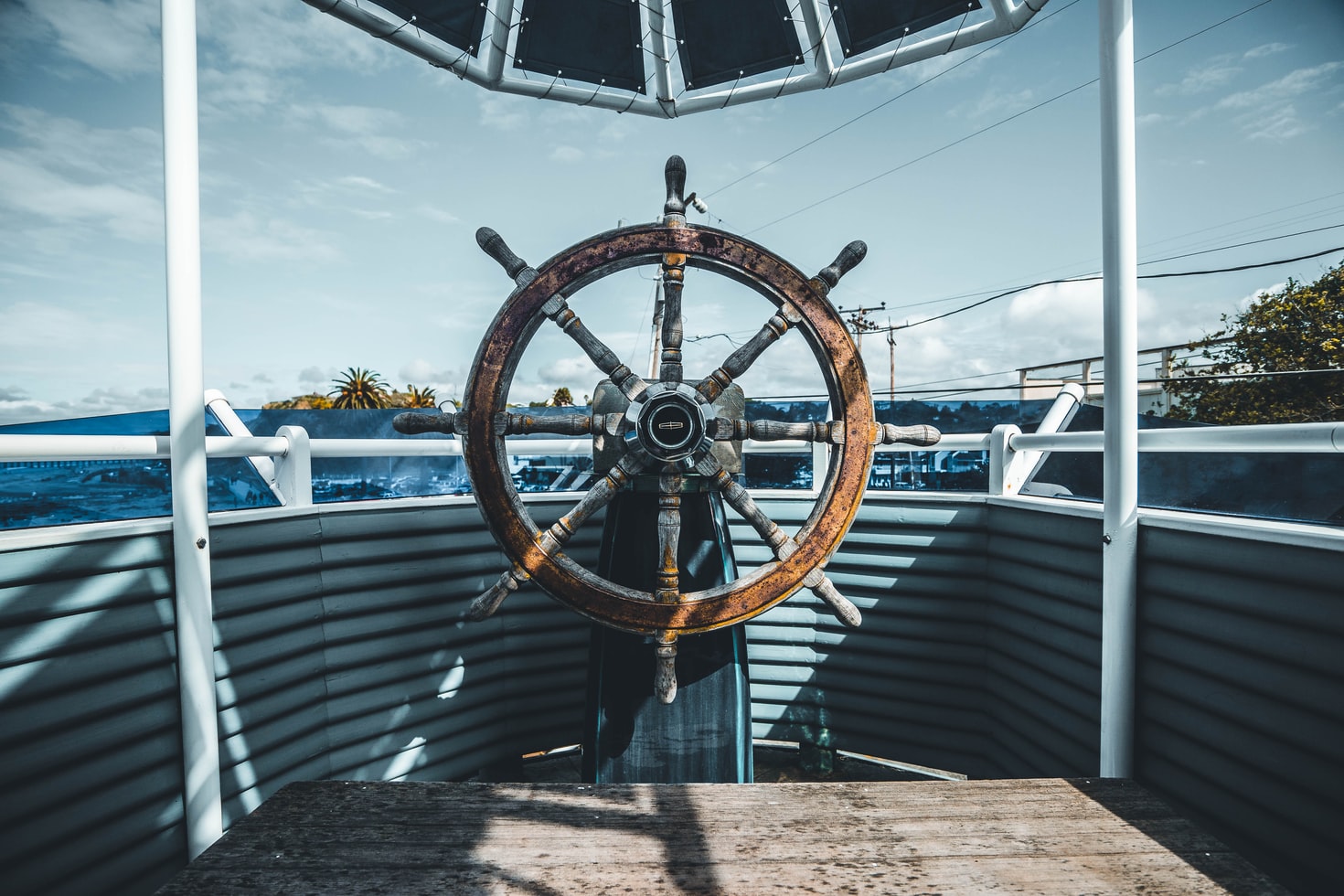When the magnetic compass was first invented, it was believed that the needle always pointed to the North Pole. (Not surprising, said many. After all, wasn’t the North Pole made of solid iron?) But the truth was soon apparent — the magnetized needle didn’t point to the Pole at all, no matter what it was made of.
The north magnetic pole was at longitude 96 degrees west and latitude 71 degrees north. Nobody knows why. To add to the puzzle, the south magnetic pole is not even diametrically opposite, but is at longitude 156 degrees east and latitude 75.5 degrees south. The only blessing for navigators is that both poles are relatively stable.
You steer by your magnetic compass which points to the north magnetic pole. To find where you’re really going, you apply “variation,” an angle that is measured in degrees east and west. Since all navigation charts carry a compass rose showing the amount and direction of variation at any given place on the earth’s surface, it’s a simple matter to work out a magnetic course to steer by.
You hear the term “dynamic range” in conversations among boating professionals.
The dynamic range of a radio, video or electronic unit is its ability to present simultaneously both the weakest and strongest information received by it at an almost equal level.
In radio equipment, dynamic range moves the strongest and weakest signals to the same audio levels. In video sounders it displays strong surface echoes and weak deeper echoes in the same manner. In radar it prevents a very strong signal from completely overpowering a weak one.
There is a general rule that says that each 100 lbs added to the load in the average small power boat will slice off about 1.6 km per hour from its top speed.
Maybe it doesn’t sound like very much but, when you think of it, only 3.2 km per hour is about what keeps that hotshot up the lake ahead of you in those friendly races he’s always suggesting.
With a cubic foot of water weighing 62 lbs, or one gallon of gasoline (3.8 litres) weighing about 8 lbs, you soon realize that it can add up quickly.
So start making a list: a 10-gallon (37.8 litres) tank full of fuel is close to 100 lbs. Then there are all those damp life jackets stowed below deck, and the bottles you forgot to take ashore after the picnic, or that second anchor you don’t really need aboard. Maybe it wouldn’t hurt to take off a few pounds yourself.
Speaking of picnics, if the ice gave out early at your party because the contents of the cooler filled only half the space, here’s a neat idea to make it last longer.
Buy a few sheets of “bubble wrap,” available wherever they sell wrapping and shipping material. Light in weight and easy to remove, it’s often used to fill space in a carton or to wrap fragile items.
Just fold it loosely and lay it on top of your ice and drinks to cut down on the extra air in your cooler. You’ll be surprised what a difference it makes to the life of the ice cubes.
Keyword : Alberta BOATING, BC BOATING, boat, Boating, boating adventures, BOATING destinations, BOATING facilities, boating in Canada, BOATING in New Brunswick, Boating in Nova Scotia, Boating in PEI, Boating in Quebec, BOATING in Saskatchewan, boating lifestyle, BOATING marinas, boating ontario, Docks, Manitoba BOATING, Marinas, Maritime boating destinations, nautical, nautical terms, navigators, north magnetic pole, ontario boating, power boating, Power Boating destinations, where to go boating Alberta BOATING, BC BOATING, boat, Boating, boating adventures, BOATING destinations, BOATING facilities, boating in Canada, BOATING in New Brunswick, Boating in Nova Scotia, Boating in PEI, Boating in Quebec, BOATING in Saskatchewan, boating lifestyle, BOATING marinas, boating ontario, Docks, Manitoba BOATING, Marinas, Maritime boating destinations, nautical, nautical terms, navigators, north magnetic pole, ontario boating, power boating, Power Boating destinations, where to go boating
